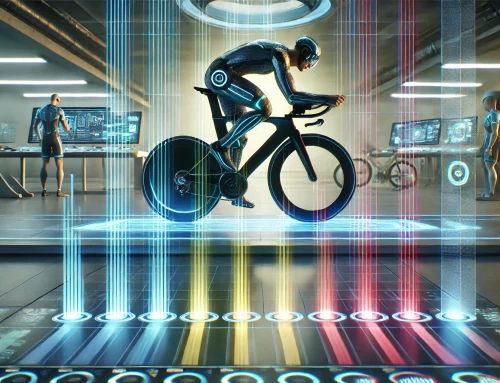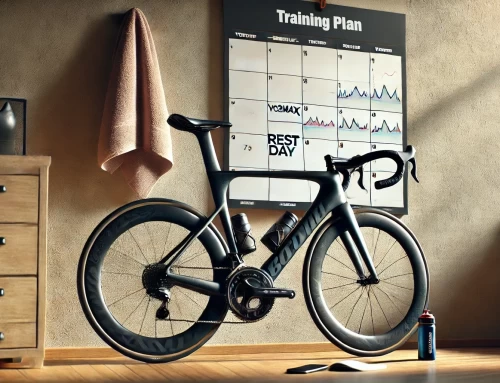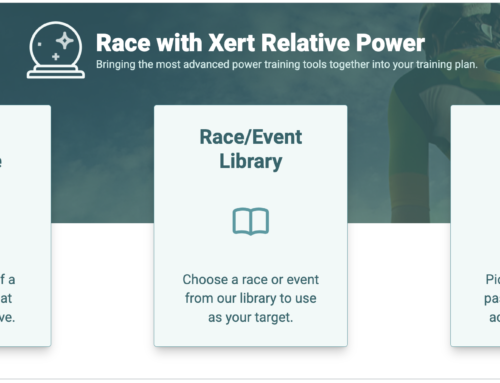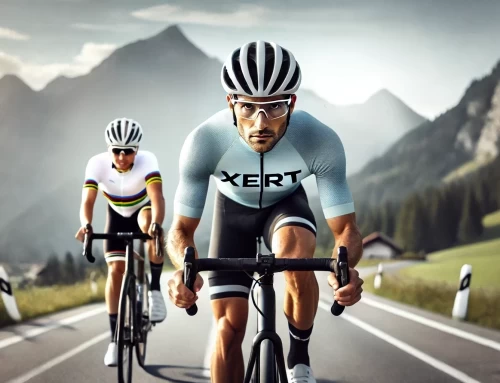By Chris Bennett
As I lay in the hospital after four hours of facial reconstruction surgery following a crash in the Tour Aotearoa I could only think how inconvenient this was given that in four months I would be starting the biggest bikepacking adventure of my life: 7,390 km from Norway to Spain in the North Cape to Tarifa race.
Selecting Xert
Fortunately, I had an ace up my sleeve in the form of Xert which had grown to be a key tool for my training since I first used it as a beta tester. Like many, I lead a very busy life and so wanted to maximize the efficiency of my time on the bike. This meant ensuring that I was not going too easy on my hard days, and too hard on my easy days. Xert’s ability to dynamically monitor my performance was a major attraction. Later when it introduced the ‘Adaptive Training Advisor’ it became what I think is the best tool available for anyone who wants to become a better cyclist.
At the risk of offending the Xert team, I will admit that at first I did not trust the system. So I did a lot of parallel analyses with WKO+ and Xert as well as drawing on my experiences. I reviewed the training program from Xert against the ones that I had used for previous races. Sorry. I’m an engineer after all. What came out from this was a belief that Xert would get me where I needed to go in the most effective way possible.
A seductive benefit of Xert – especially when coming back from a major injury – was getting rid of the need to do those nasty FTP tests. The way that Xert looks dynamically at where you are and infers your FTP is a real advantage. Absolutely no way I was going to do 2 x 20’s or Coggan’s all out testing. I just let Xert tell me where I was and was reassured that I was not detraining too much.
Slight FTP digression. Before my injury I had some ‘fun’ playing with the Xert FTP app. I have a BSX Insight in which you do a ramp test to failure to estimate your FTP. This correlated really well with the Xert FTP estimate from doing several Sufferfest videos… I did 23 videos over a 3 month period and the Xert FTP increased appropriately over time, correlating well at the end with my BSX Insight. So bye bye BSX.
My Training
As soon as I was out of hospital I began planning how to be race fit by 20 June. Since I also had a major concussion, I had to be very careful not to overdo it. Riding outside was risky in case I crashed again as it could seriously compound the concussion. After a two week rest it was on the trainer for the next month, and then some big rides outside. You can see this from my progression chart below with my crash on day 5 of my race in February and the detraining that happened over the rest and recovery period in the spring.

Once I began to train seriously again, I used the Adaptive Training Advisor to propose the daily workouts for me. In all my past races I had a ‘fixed’ training program that I developed based on a number of resources. It worked really well for me, but leading up to the race I had a lot of travel for work, which was going to make it really difficult to follow my usual fixed plan, and I had good and bad days recovering from my concussion, so I wasn’t always up for hard training. Xert’s ability to propose workouts based on what I had been doing was ideal. I’ll also say that the type of workouts intuitively made sense based on my previous experiences, which was reassuring.
As an example of how the adaptive system helped me, I flew to Washington D.C. for a week of meetings and the morning after I arrived I did a ‘beat the jet lag’ century ride. I hadn’t planned on it, but it was an incredible April morning with great weather, so I just kept riding. Xert then adapted the rides over the following days to reflect my indulgence of being away from watching Netflix on the trainer and nice weather. Other days I started riding and my head said “… do something else”. I didn’t worry as much about this as Xert’s future workouts adapted accordingly. I just wished that the Xert Fitness Planner would automatically update and show the future workouts rather than us having to push that planner button (feature request!).
As I followed the general recommendations from the Adaptive Training Advisor (with an Aggressive rate of progression, which meant about 2 hours a day of training on average) over the next two months , I saw my star count increasing and its colour changing from red to yellow to blue as I moved from very tired to fresh and back again, depending on the training load. I must say that there was good correlation between all of these and how I felt! I also really liked the training pacer as a simple and effective way to tell me whether I was ahead or behind my training plan.
By the time I began my taper for the race—and the 43 hour trip from New Zealand to Norway—I was really happy with where I was fitness wise. Four stars and fresh. That’s what Xert said … was I ready? Most definitely.
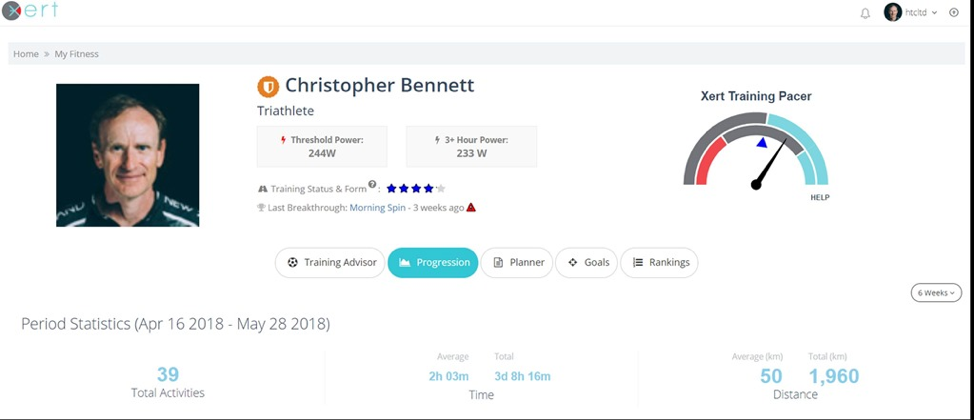
The Race
The first five days of the race I averaged 353 km/day, including a great 444 km run into Helsinki to catch the ferry to Estonia. I was still well above the 300 km/day into Poland when, unfortunately, I began to have some of the symptoms of my concussion reappear, so I adapted my race plan and rode shorter days, trying to get a good night’s sleep to recover.
If you like biking and have an adventurous spirit, you should definitely try a bikepacking. The concept behind these races is to get you and your bike to the finish line, with no outside support. So you ride as much as you want every day and when tired, find a place to sleep. It may be a hotel, a campground, a bus stop, or just next to the road. It depends where you get to! In the race I practiced what we call ‘stealth camping’. In other words, I’d sleep places where I was probably technically not allowed to, in the hopes of being interrupted. My spots were sports fields (these are the best as there is nobody around at night and early morning), campgrounds (in Finland I bivied in the children’s play room), empty fields, etc. The most embarrassing was when I bivied in the entrance room to a sauna at a campground in Finland. It was actually someone’s suite called the ‘sauna’ suite. The police came but were very friendly in asking me to move on and used their GPS to point me to a spot across the road.
One of the greatest challenges—especially for a vegetarian—is getting enough calories to fuel you. Ice creams are great, and I limit myself to a maximum of eight ‘Magnums’ in a day. Any more would be gluttony. Last year in Australia during the Indian Pacific Wheel Race I did a 472 km run from Ceduna to Port Adelaide and my Garmin said I burned 11,000 calories that day. Guilt free eating, when you can get it, is great!
I ended up with an average of just over 250 km/day for the race including one and half rest days, finishing in 10th place after 29:10:30 (days:hours:minutes). It was great to reach the finish line, but I felt like I wanted to keep riding! I was physically feeling great with no saddle sores, numbness, and I was not spent. Unfortunately, it was time to return to the real world.
The most wonderful aspect of the racing is the camaraderie and shared adventures with other riders. You have this shared adventure and find friendships that last a lifetime. Of course, it isn’t always easy—in this year’s race I described Spain as “heat, headwinds, hills and hunger”, but the sense of achievement, even if you don’t make the finish line, is unbeatable.

Control Point 5 after 7,000 km: the 3,390 m high summit of Pico du Veleta in Spain
Thanks to Armando and the team for helping me to recover from my crash and get race fit for such an adventure. Unfortunately, my wife has said “NO MORE” to these long-distance races so time to do something easier. Back to Ironman. I’ll be using Xert to help with the bike training of course…once you’ve drunk the Cool-Aid of Xert there is no going back.
If you’d like to read more about the event, my race report is at https://triduffer.wordpress.com/2018/07/28/north-cape-tarifa-race/
Chris Bennett is a civil engineer who is a Lead Transport Specialist for the World Bank, leading their transport work in the South Pacific islands. Originally from Toronto, Canada, he escaped Canadian winters 35 years ago for New Zealand. Working in many different countries, he’s known for not having a girl in every port, but a bicycle in every port —at one point 15 were spread between home and seven work countries. His mother had no idea what she was unleashing when she gave him his first bike. Chris and his wife Lis live in Pohara, Golden Bay where the weather is fine and the riding unbeatable. His blog is at www.tri-duffer.com.
Xploits is a collection of stories by Xerters from around the world, about their goals, achievements, and how Xert helped them get there.
